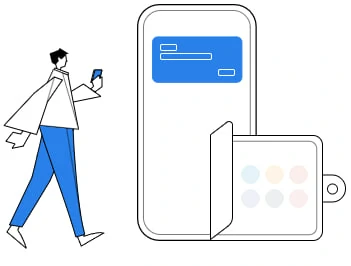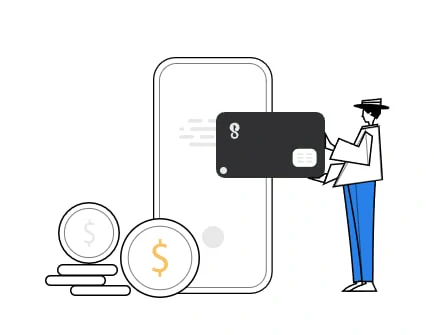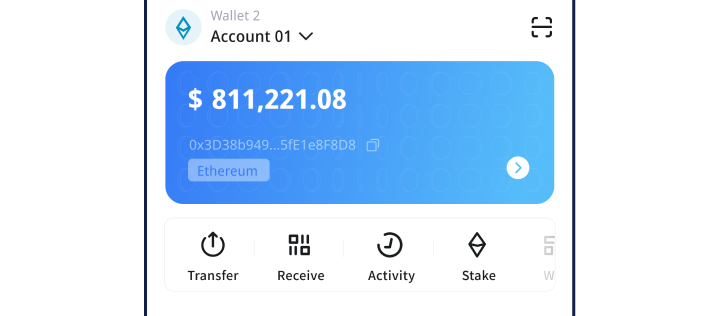# Understanding Token Wallet Apps: A Comprehensive Guide
Token wallet apps have emerged as essential tools in the world of cryptocurrencies and digital assets. As the adoption of blockchain technology increases, these wallets provide users with an interface to manage their tokens safely and efficiently. This article delves into the structure, functionality, and implications of token wallet apps, exploring their importance in the decentralized finance (DeFi) landscape.
## What is a Token Wallet App?
A token wallet app is a software application designed to store and manage cryptocurrency tokens. Unlike traditional wallets, which hold only specific types of currencies, token wallets support multiple token standards, such as ERC-20 and BEP-20, and allow users to interact with various decentralized applications (dApps). These wallets enable users to send, receive, store, and swap digital assets securely.
## Types of Token Wallets
Token wallets can be classified into several categories based on their functionality and security level. The two primary types are software wallets and hardware wallets.
### Software Wallets
Software wallets are further divided into hot wallets and cold wallets:
– **Hot Wallets**: These wallets are connected to the internet, making them easy to use for regular transactions. They can be browser-based (web wallets) or mobile applications. Examples include MetaMask and Trust Wallet. While they offer convenience, they are more susceptible to hacking.
– **Cold Wallets**: Cold wallets, or offline wallets, are not connected to the internet, making them more secure but less convenient for quick transactions. Hardware wallets like Ledger and Trezor fall into this category. They store private keys offline, minimizing the risk of online attacks.
### Custodial vs. Non-Custodial Wallets
Another distinction in token wallets lies between custodial and non-custodial wallets:
– **Custodial Wallets**: Managed by third-party services, custodial wallets maintain control over the user’s private keys. While this simplifies the user experience, it introduces the risk of hacks affecting the service provider.
– **Non-Custodial Wallets**: These wallets allow users to maintain control of their private keys, providing enhanced security and ownership. Users are solely responsible for safeguarding their keys, which means they must implement strict security practices.
## Addressing Security Concerns
Security is a paramount concern for token wallet apps. The decentralized nature of cryptocurrencies makes them attractive targets for malicious actors. Major threats include phishing attacks, wallet hacks, and malware. The following strategies can enhance wallet security:
### Strong Authentication
Implementing two-factor authentication (2FA) adds an additional layer of security by requiring a second form of verification, such as a mobile app or an SMS code, before accessing the wallet.

### Secure Backups
Users should regularly back up their wallets, including recovery phrases or private keys, and store them securely offline. This ensures that users can recover their assets in case of device loss or failure.
### Regular Software Updates
Wallet developers frequently release updates to patch vulnerabilities and improve security features. Users should ensure that their wallet applications are always up-to-date to mitigate risks.
## User Experience and Interface
The user experience (UX) of token wallet apps is crucial for mass adoption. A user-friendly interface enables individuals, regardless of technical skills, to manage their assets effectively. Key UX elements include:
### Intuitive Design
A well-designed interface presents information clearly and makes navigation easy. Users should find it straightforward to send and receive tokens, swap assets, and connect to dApps without confusion.
### Comprehensive Support and Resources
Many users seek guidance when using a token wallet. Wallet providers that offer extensive resources, including FAQs, tutorials, and customer support, enhance user experience and build trust.
## Integration with Decentralized Finance (DeFi)
Token wallet apps are pivotal in facilitating decentralization through DeFi platforms. DeFi allows users to engage in financial transactions without intermediaries, providing access to services such as lending, borrowing, and yield farming. Wallets play a role in this ecosystem by offering:
### Direct Access to dApps
Token wallets often integrate with various dApps, allowing users to interact seamlessly with DeFi services. This includes token swaps, liquidity pools, and decentralized exchanges (DEXs).
### Cross-Chain Functionality
As multiple blockchain networks evolve, cross-chain wallets enable users to manage assets across different platforms, further expanding their capabilities within the DeFi space.
## The Role of Token Standards
Token standards define how tokens operate on blockchains, playing a significant role in wallet functionality. The most common standards include:
### ERC-20 Tokens
ERC-20 is a widely used Ethereum token standard that allows developers to create fungible tokens. Most wallets support ERC-20 tokens, enabling users to hold popular cryptocurrencies and participate in various DeFi projects.
### BEP-20 Tokens
BEP-20 is the Binance Smart Chain equivalent of ERC-20, allowing for token creation on Binance’s blockchain. Wallets that support BEP-20 tokens attract users looking to interact with Binance-based dApps and services.
## Token Management Features
Advanced token wallet apps include features designed to enhance asset management:
### Multi-Token Support
Users can manage numerous tokens from different blockchains within a single wallet, simplifying portfolio management.
### Staking Capabilities
Some wallets allow users to stake their tokens, earning passive income through interest. This has become a popular feature, attracting users interested in maximizing their returns.
### Transaction History and Analytics
Detailed transaction history and analytics tools can assist users in tracking their spending and investment performance, providing insights to inform future decisions.
## Future Trends in Token Wallet Development
As the cryptocurrency landscape continues to evolve, token wallet apps are likely to undergo significant changes. Anticipated trends include:
### Enhanced Privacy Features
With growing concerns about privacy, developers may introduce features that enable users to obscure or anonymize their transactions, protecting personal information.
### Interoperability with Other Technologies
Future token wallet apps may focus on greater interoperability with technologies such as Artificial Intelligence (AI) and Internet of Things (IoT), enabling new use cases and enhancing user capabilities.
### Integration with Central Bank Digital Currencies (CBDCs)
As governments explore CBDCs, token wallets may begin to accommodate these digital currencies, allowing users to hold and transact with both cryptocurrencies and CBDCs in one app.
## Conclusion
Token wallet apps serve as crucial gateways to the world of cryptocurrency and decentralized finance. By understanding their functionality, security features, and integration with broader blockchain ecosystems, users can make informed decisions when selecting a wallet. With continuous advancements in technology and user experience, token wallets will likely evolve to meet the changing needs of the digital finance landscape, empowering a more inclusive financial system worldwide.
As the landscape of cryptocurrencies expands, the importance of sophisticated token wallet apps cannot be understated. They represent not only a means for managing digital assets but also a pivotal component of the future of finance. As users become more educated and the technology matures, we can expect token wallets to play an increasingly prominent role in our financial lives.







